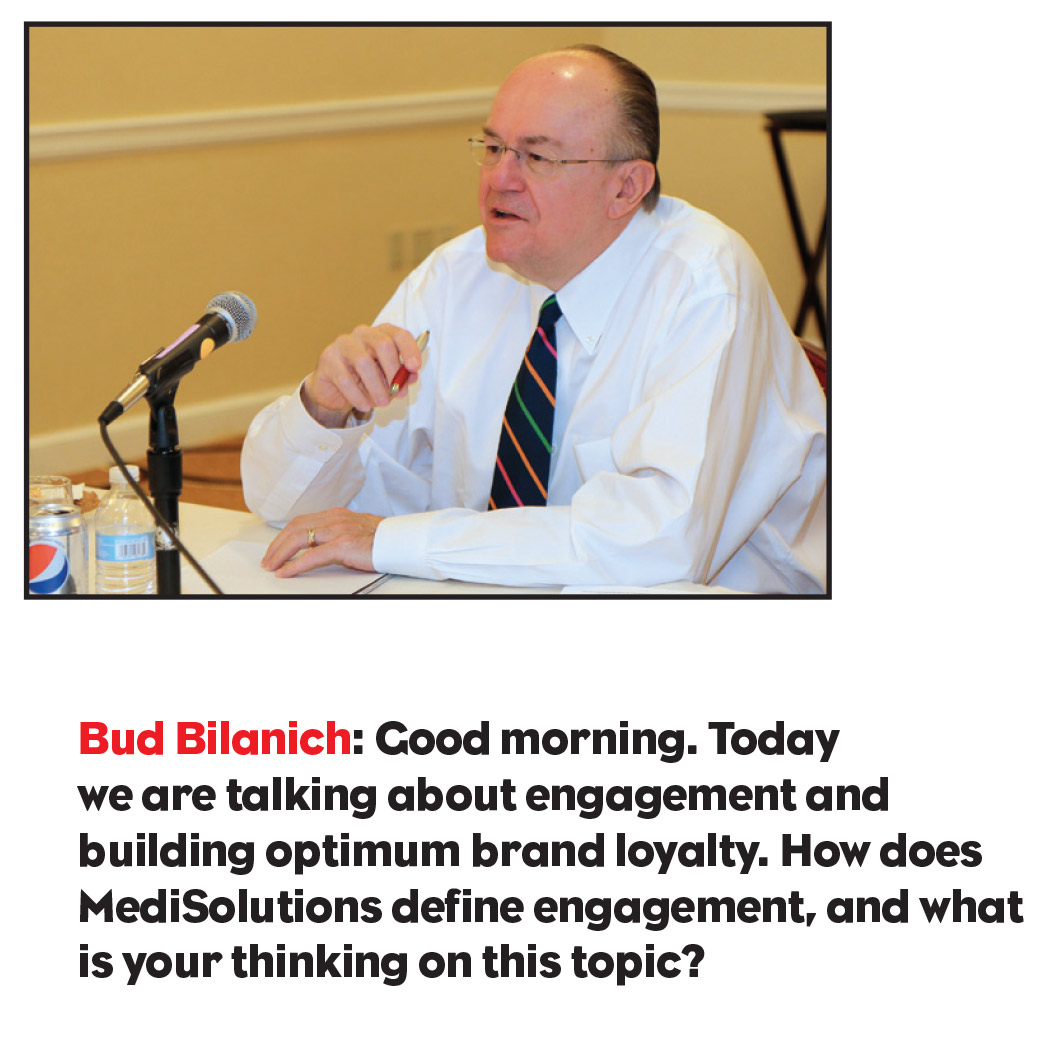Several of PM360’s 2015 Brand Champion Award Winners gathered before the Trailblazers Awards Gala last year to discuss the latest trends and methods to improve patient engagement and achieve brand loyalty among all consumers. PM360’s Common Sense columnist, Bud Bilanich, moderated the event. Participants included:
• Rich Appiah, Product Director, Janssen Biotech
• Amelia Irvine, Director, CD/BD & Strategy, Pfizer
• Chris Johnson, Marketing Director, Movantik, AstraZeneca
• Lars Merk, Multichannel Marketing Director, Diabetes, AstraZeneca
• Paula Palmer, Associate Director, PRADAXA Marketing, Consumer, Boehringer Ingelheim
Participants from MediSolutions, our roundtable sponsors, included Stephen Hoelper, Vice President, Sales, Marketing & Product Development; Rob Hopfan, Team Leader, Physician Engagement; Roman Kudryashov, Product Marketing Manager; John Spingler, Solutions Consultant; and Rostislav Kudryashov, Research, Community and Content Manager.
Bud Bilanich: Good morning. Today we are talking about engagement and building optimum brand loyalty. How does MediSolutions define engagement, and what is your thinking on this topic?
Stephen Hoelper: Let’s define who we’re engaging first. We’ve done a lot of business engaging with physicians. Getting the right message with literally the brand in the hand, as we call it. Today, we’re looking at the evolution of digital—everyone carries these ubiquitous devices in their pockets. Everyone’s connected.
We have studied the journey of physicians to pinpoint what they are doing on their off time, what they are doing when they’re in the office, what opportunities are available when they’re at home, and when they are responding to their email. All of that matters in how you communicate with them.
We’ve taken it as far as to look at the workflow in terms of how they are clinically and operationally working. We do have products in ePrescribing, but one of the products we haven’t yet talked about is designed to provide the tools that help physicians maximize reimbursable revenue through mobile applications that help them with billing and with the execution of certain tests. We go as far as to look at advances in medicine. Since patients are the end users of the product, we’re also looking at transition points. What are the transition points when a physician has an interaction with a patient? What type of dialogue are they having? What patient history do they have in the office?
Bud Bilanich: What are you thinking about when it comes to engagement, Paula?
Paula Palmer: The sales force plays a big role in the process, but it’s the collective nature of all your efforts that makes an impact. Physicians are consumers too and want to consume your brand information at their convenience and on their own terms. As a consumer marketer you learn that it is not on your terms but the consumer terms that cements engagement. The question becomes: How can I reach physicians with messages through multiple channels on their terms in concert with the face-to-face interactions of the sales force.
Bud Bilanich: In these days of managed care, do physicians have the time for face-to-face interaction? Chris, do you have something to say?
Chris Johnson: Six or seven years ago, we were able to physically access about 80% of our HCPs. Today, it’s about 50%. Our job now is to find new ways to engage them. We’re seeing an evolution in terms of where we’re reaching them. Not just in the office, but all the other spots where they are receptive to information.
Bud Bilanich: Do you also see the same evolution in terms of patient communication?
Chris Johnson: Yes. And they’re both critical and both evolving in terms of how we reach them. When I think about physicians, they have so much information coming at them. For our content to hit their radar, it has to be presented in a way that captures their hearts and minds—and the more we can boil a problem or solution down to its essence, the more readily we’ll prepare healthcare providers to have a good conversation with their patients. One of the things I admire most in our field: When someone can communicate complex scientific information in a way that’s relatable and easy to understand, and I constantly challenge myself and my team to do that.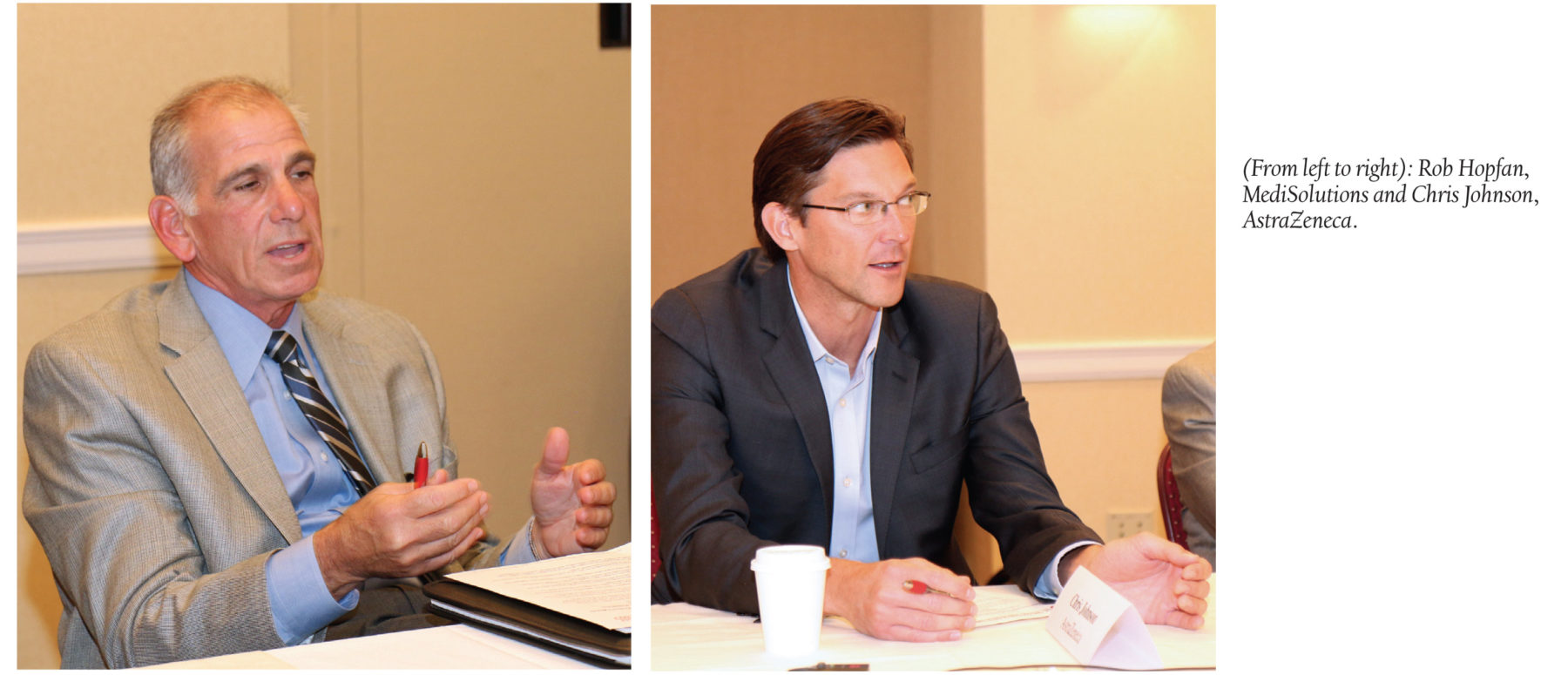
Bud Bilanich: So you are expanding into other areas. What are they?
Chris Johnson: So much is happening digitally. A traditional speaker program can now be delivered through a webcast viewed from a desktop or mobile device. Electronic Medical Records are now critical to the patient care and workflow in an office. The more effective we are in delivering information the way physicians want to receive it, the more successful we will be. This is one of the most difficult challenges we face in a very time-constrained healthcare environment.
Bud Bilanich: Paula’s answer made me think of “surround sound.” When you talk multichannel, people are going to pick up different things from different channels. Lars?
Lars Merk: I work in the diabetes space, probably the most competitive marketplace. Chris mentioned that the industry can’t get access to 50% of offices. When reps don’t have access, we do more speaker programs—or conventions get more competitive. You really need to stop and think: What are we trying to bring to these physicians?
Bud Bilanich: It’s a demographic thing. I am on the faculty at University of Denver and every Monday I bring in articles. I ask if anybody saw this. The 30-year-old students look at me like I have two heads—why would I look at a newspaper?
Lars Merk: Today they get their news in sound bites. My children know the sound bite but no more information—that’s how they interact with information. If they were physicians you wanted to communicate with, then that would be the methodology. For the older physicians, they are online a lot. But I’m also engaging into that point—and the newspaper, and other things.
Bud Bilanich: That brings us back to the surround sound.
Lars Merk: Surround sound, but also allowing for these different and varied ways of communication to not just pervade our marketing, but also allow our sales teams to communicate in different and unique ways.
However, the personal relationship that a rep develops with a physician brings the value of our organizations to the physician. And if we stop allowing that to happen because of either access changes or our own regulatory or legal constraints, then we diminish the value of that relationship.
Stephen Hoelper: If we go back to newspaper for a moment—the fact is that it’s an experience. In a physician’s office, there may be a laptop and a little stool where the doctors sit. He literally turns his back to the patient as he writes the prescription. What kind of experience did he just have with his patient?
Bud Bilanich: Yes, how does the patient experience the physician?
Stephen Hoelper: If you go through care, and you have multiple conditions, multiple pharma companies, biotechs are going to help you out.
But no one except the doctor is front and center saying I’m here to help you. That impacts marketers. For what reasons do people not take medication? Cost? How it makes them feel? Side effects they are unaware of? Or, does that diabetes medication actually work?
Bud Bilanich: That takes us into the adherence realm. Diabetes, for instance, is a disease that may not make you feel bad—until one day you develop problems. The personal experience is not there. Lars, what have you been able to do that you think has been pretty successful in terms of getting better engagement?
Lars Merk: You have to identify the emotional connections. How do you do that? How do we enhance how a patient deals with that disease? What are the systems and support services that we can surround that patient with to make the patient more successful while also making that physician-patient relationship more successful?
Digital communications create opportunities for HCPs to share info with their patients. We want to enhance that relationship. We do get better adherence if a physician and a patient have strong communication, relationships, and trust.
Bud Bilanich: So you might think of it more as patient engagement, but it’s meant to assist the physician in his or her ability to engage better with the patient about the disease.
Lars Merk: Yes. We have to think about how physicians are incentivized, and how they’re operating with patients and design programs. At AstraZeneca, we created a digital diet and exercise program to fit both patient lifestyle and the physician’s workflow as well. That’s important. Patients don’t expect that to come from a pharmaceutical company.
Bud Bilanich: We talk a lot about the importance of treating patients as individuals. Engagement may be more or less easy to achieve based on the disease, and partnering with advocacy groups can help. Rich, what success stories do you have?
Rich Appiah: We recently launched a patient support program, a program to ensure access to one of our products, and provided multiple non-personal channels for HCPs to engage and receive information about the program, including webinars, email communications, and our website.
Simply making multiple options available created a greater level of engagement with our program content. I was surprised, for example, at the level of engagement on the webinar.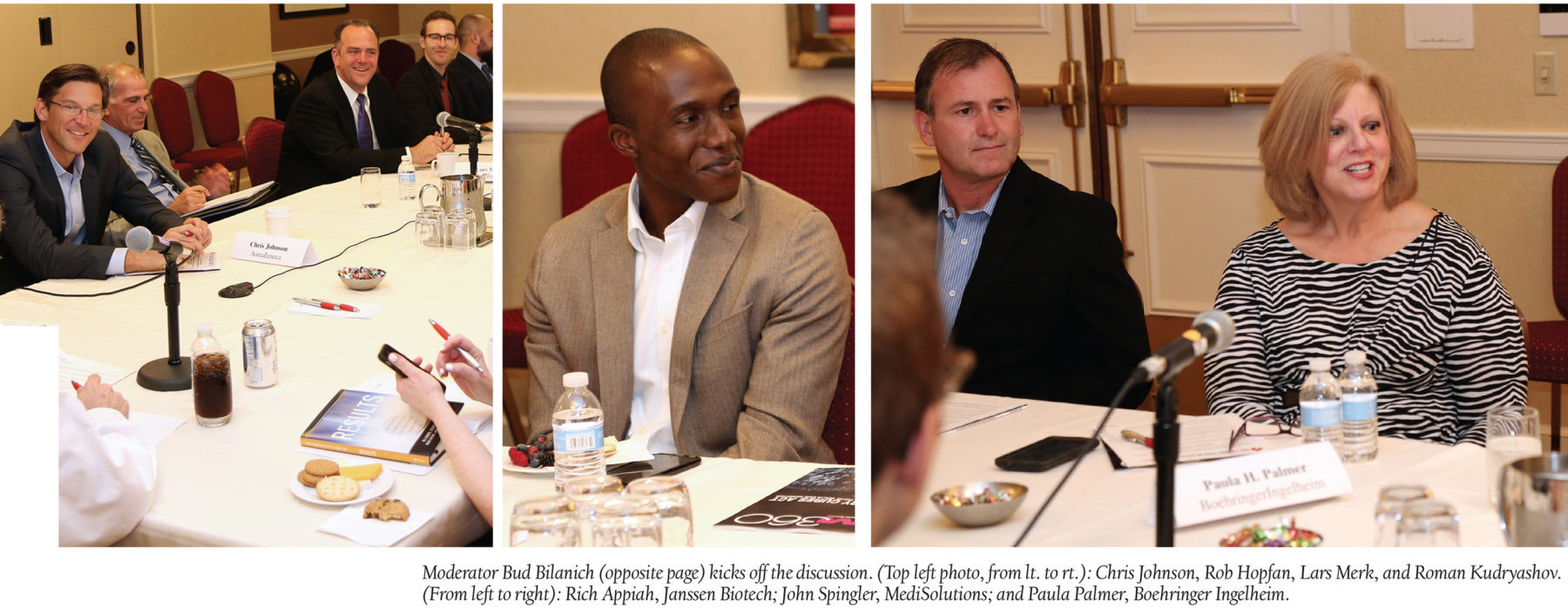
Bud Bilanich: Did attendance at live events rise because people could ask live questions?
Rich Appiah: Yes, I think attendance at the live webinars was robust because of the opportunity to engage and ask questions. I think participants also valued hearing program information driven by questions from other webinar participants.
Bud Bilanich: Paula, what kind of successes have you had with engagement?
Paula Palmer: In the pulmonary area, the tipping point of success is best demonstrated when the physician and patient discussion is enhanced.
Helping physicians and patients have a better dialogue is crucial to outcomes. Motivational interviewing helps physicians enhance their listening, probing, and engaging skills to elicit more productive conversations with patients. We offer this technique as a value-added program through our speakers program.
Bud Bilanich: Amelia, what are your thoughts about positive experiences with engagement, and what are you doing?
Amelia Irvine: Coming from an analytics perspective, we’re often tasked with identifying reasons for performance—either over or under—and to derive strategies that will encourage success.
One key, often overlooked area of critical importance is the symbiotic relationship between HCPs and consumers. Brand teams should drive strategies that ensure both parties—both keys to success in their own ways—are engaging with one another in tandem and cohesively.
Bud Bilanich: Anybody else have anything to add on this? Is there a metaphor you can use that brings this whole notion of how we speak or interact with one another, that helps with adherence?
Chris Johnson: In terms of engaging on the brand, one of the things we did when getting ready to launch a treatment for Opiate Induced Constipation is realize that this was a condition that was very low on the radar screen for our customers.
We led with education about the condition—and did that 12 months prior to receiving an approved label. It wasn’t a small effort. We had a major presence at national congresses, front cover advertising, or cover apps in major medical journals. It was a significant effort to help educate our customers about the burden Opiate Induced Constipation places on patients.
When we launched, we again led with educational messaging—not branded messaging—to encourage patients to have that discussion with their physician. That allowed us to approach this market with a higher level of credibility and become more successful in engaging healthcare professionals in a conversation about a condition that they—and patients—just didn’t really want to talk about.
John Spingler: I’d like to ask a two-part question about engagement. The first part: Are you engaging more with audience segments beyond physicians, such as NPs and PAs? The second part: Do you do anything—and this gets to how regulatory would deal with this—in terms of the concept of micropayments. Examples of those on social media—likes. Social currency, if you will.
Chris Johnson: NPs and PAs play a critical role in the practices we see. In most states, they have full prescribing rights. We started to think about that in terms of the roles they play with the patient and in the office.
For instance: Intake, diagnosis, treatment, and discharge. We want to do different jobs with different professionals in the office. At intake, we might give them the information needed to arm the patient for a discussion with the physician.
At discharge, it might be managed care information, or setting them up with CoverMyMeds. But we’re really trying to dig deeper so we can have a total office call in which we have an objective, something to assist in the patient provider dialogue or help provide value to the practice.
Bud Bilanich: So it’s a gestalt experience—not just your interaction with the doctor.
Chris Johnson: Yes. But it’s different. There are different jobs to do. So we’ve become more segmented in terms of how we approach these different folks across the practice.
Bud Bilanich: I’d like to talk about using Big Data in terms of increasing engagement? How are you using it?
Lars Merk: Historically, we have marketers who are involved with, say, a therapeutic area, or have been in that space. You have ideas and thoughts about what should happen—and look for and find things that match your biased thoughts. Having a data scientist who simply looks at the number correlation, who doesn’t necessarily have inside business expertise or bias allows you to find correlations that you would never think of.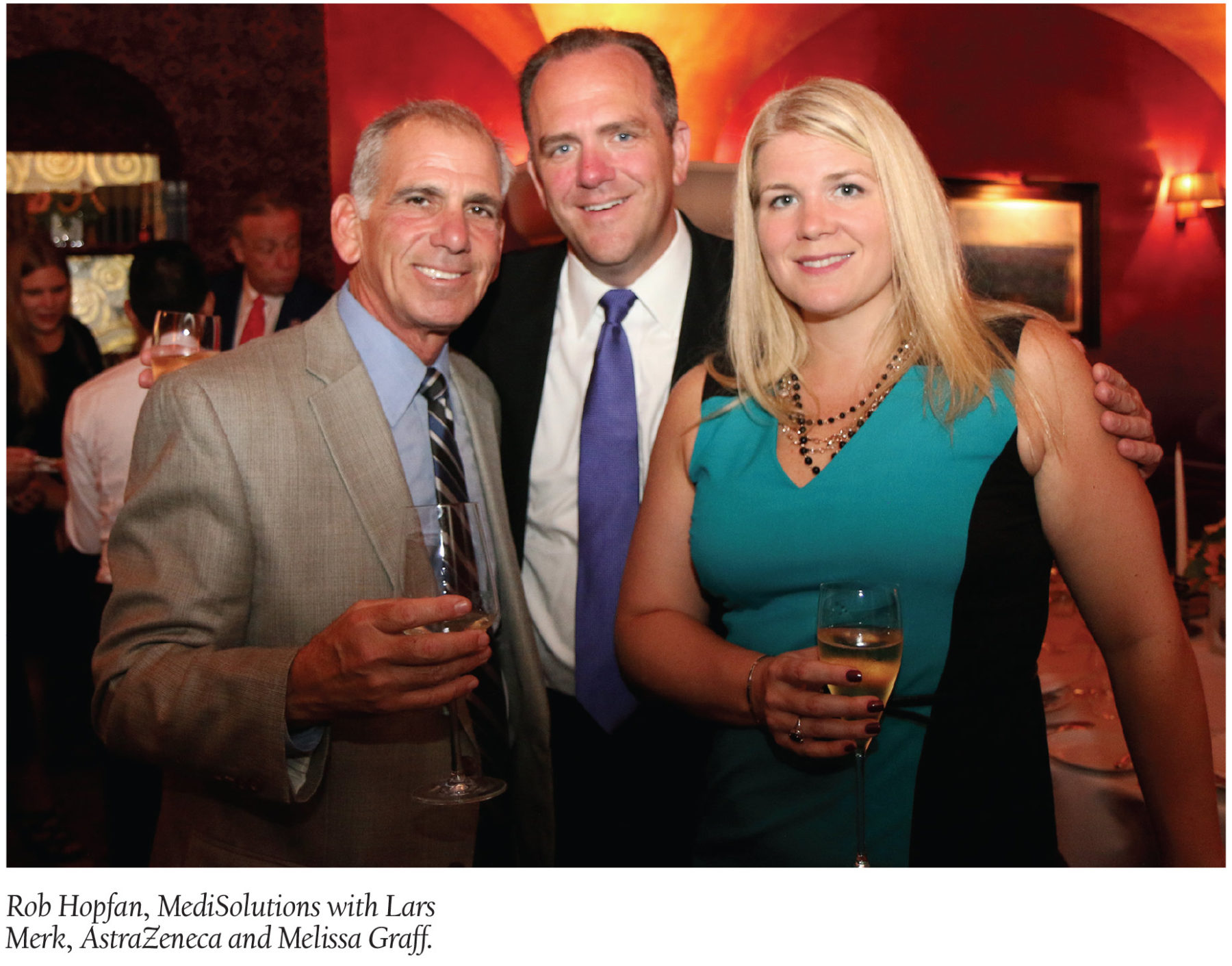
Rich Appiah: There’s been a huge effort to try to capture data that’s flowing through specialty pharmacies and their retail counterparts. We hold onto that rich level of data and then recognize that.
They capture all kinds of information. Sometimes it’s patient weight. Other times, it goes deeper. Your typical data set for non-specialty drugs show a few columns of data. With specialty pharmacy data, it can be 20, 30, 40, 50 columns of information that is captured through a one-on-one interaction, which will ultimately provide insight to understand and predict adherence and persistence.
Bud Bilanich: That’s key. If you understand that, you can help the doctor with either adherence or the treatment in general, which helps the patient. Roman, you have something to add?
Roman Kudryashov: As a part of setting up anything with Big Data, the first thing to do is ask what questions we want to get from that data—and what questions do we want to ask of the data? You take data and turn it into information, act on information, and create knowledge from it.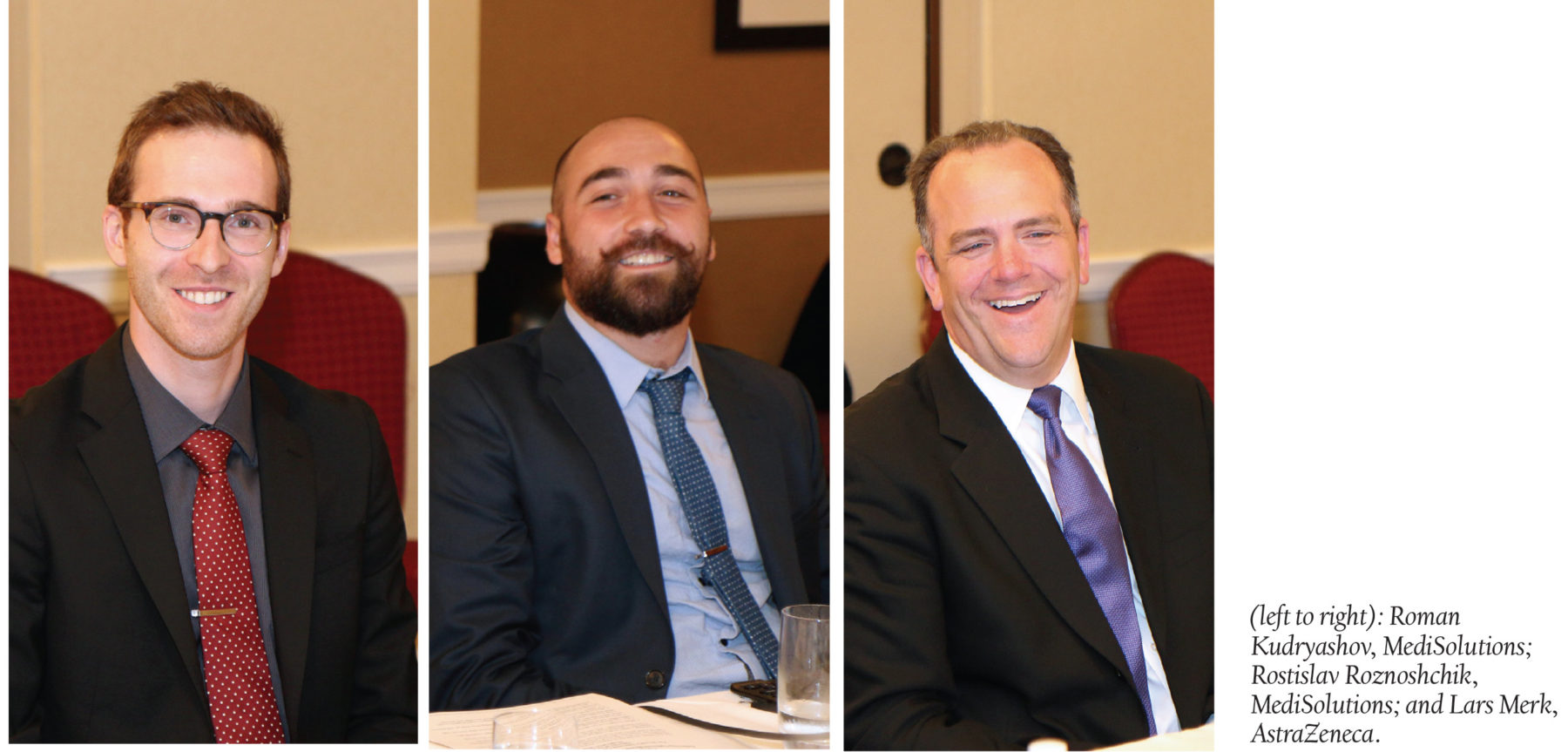
Stephen Hoelper: What’s interesting about this: Some information is not discovered through Big Data, but through the person in the office who sits there every single day and sees it day in and day out. That knowledge is equivalent to Big Data.
Roman Kudryashov: Yes, that’s a fantastic point. A lot of the conversation in Big Data gets lost on the technology aspects. What databases are we building? What surveys are we creating online? But we’ve got really valuable assets out there in the field called human beings who empathize with patients and doctors, and who see the problems everybody’s dealing with actively. We should turn to those people who see it firsthand.
The most important aspect of Big Data is in what it tells you about the behaviors that you can understand. As a marketer, once you know a behavior, you know how to influence it. The real opportunity here is to open up that data and figure out how you can get different people looking at the same thing to discover behavioral opportunities.
Bud Bilanich: Amelia, is there anything you would like to add to this?
Amelia Irvine: Rich brought up an interesting point regarding adherence and the use of Big Data to gain a better understanding of this topic. A key to driving adherence is having a fundamental knowledge of how and when products are used. If that knowledge is gained—and if Big Data can help inform that—marketing activities and sales strategies can then be tailored to the patient’s use schedule.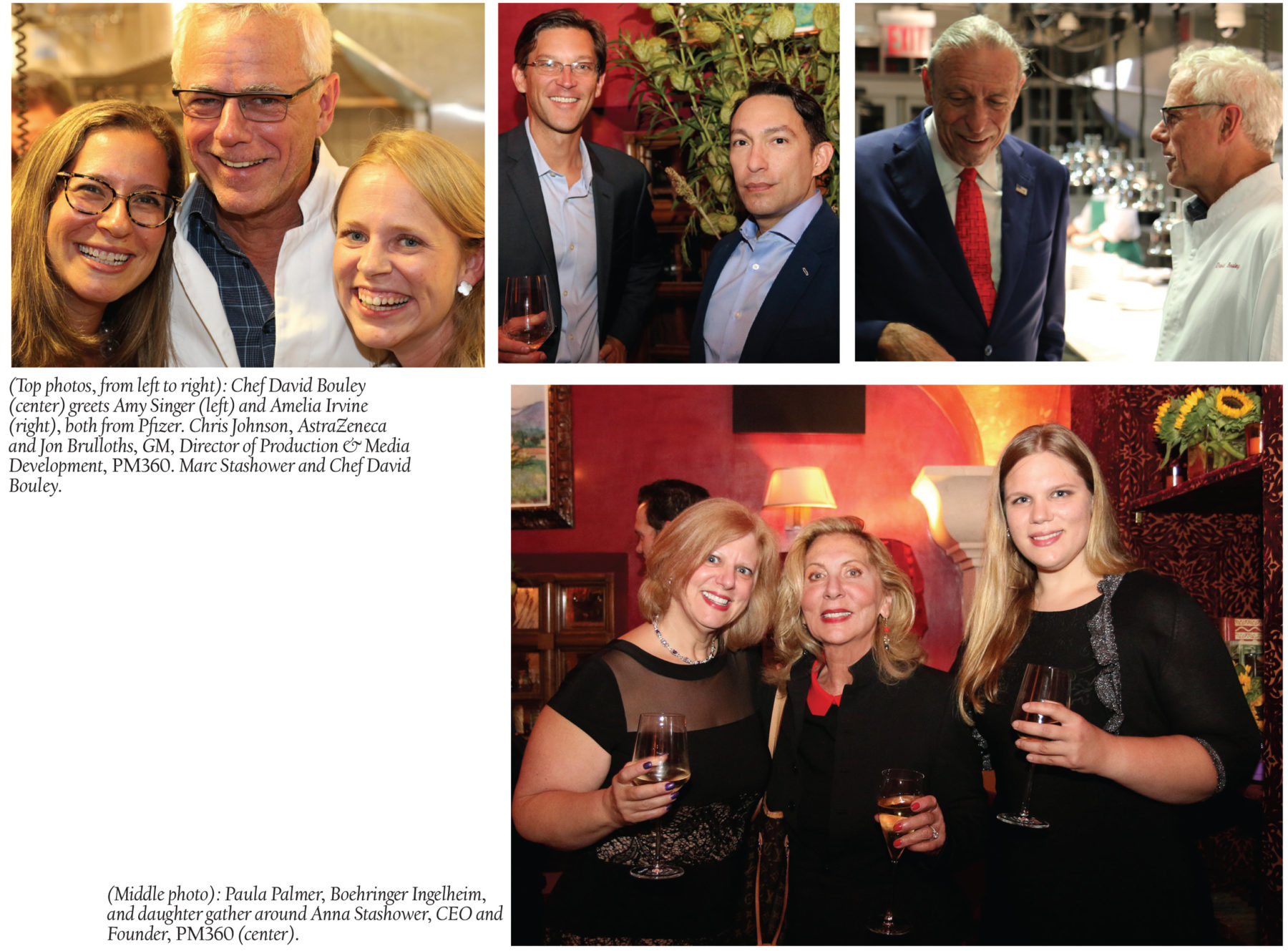
Bud Bilanich: Any last thoughts?
Chris Johnson: The point regarding what and how you communicate it is critical. About a year ago, I went to the New England Journal of Medicine’s website and looked at how they were communicating information to physicians. What struck me: They show a series of three-minute cartoons, called quick takes, in which they describe different studies, how they’re executed, and what was learned. They use humor, and they’re brief and simple. To increase engagement, qualities such as these are very compelling and engaging.



